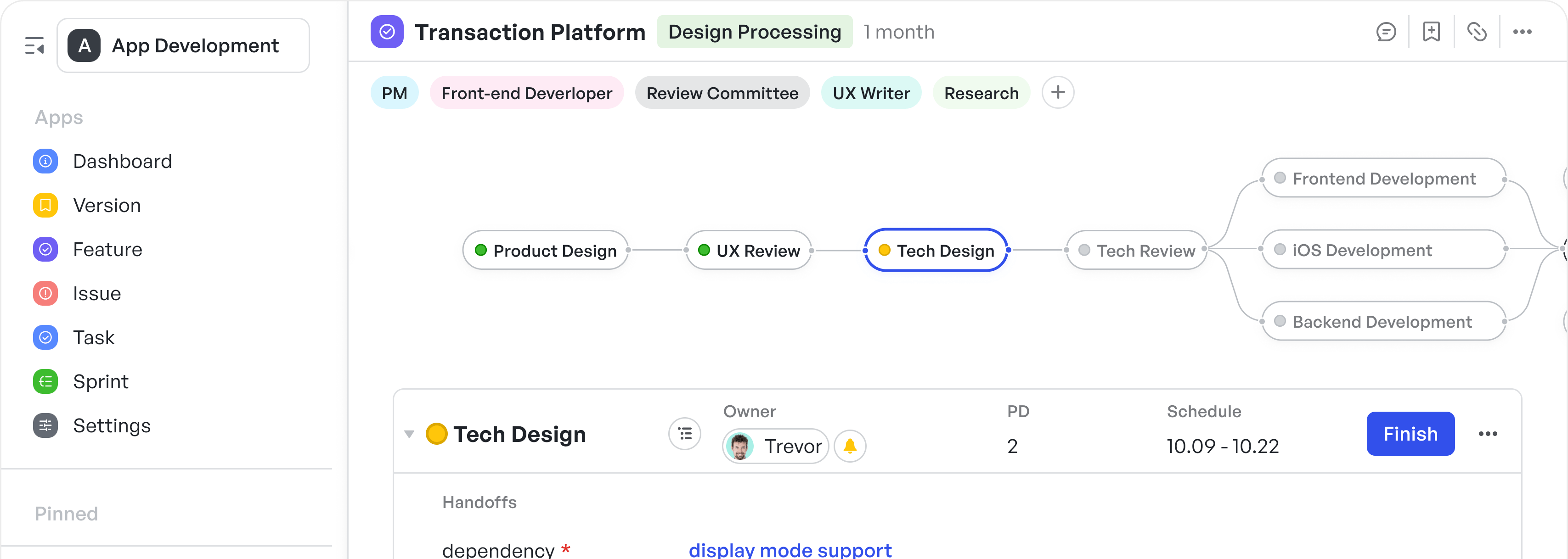Introduction to Project Scheduling Techniques for Efficient Project Management
Project scheduling is a critical component of project management, as it involves more than just listing tasks—it's about predicting, managing, and aligning resources with timelines. This guide covers essential project scheduling techniques, tools, and project management methodologies to help you streamline your project planning and execution. We will explore different scheduling techniques in project management and when to use each to maximise efficiency and success.
What Is Project Scheduling in Project Management?
Project scheduling in project management is the process of organizing, detailing, and planning the timeline and work needed to complete a project. It involves outlining the project tasks, estimating their durations, assigning resources to those tasks, and establishing task dependencies. By creating a project schedule, managers gain a roadmap for executing the work necessary to achieve the project's goals within a specified time frame.
Benefits of Project Scheduling
- Enhanced Time Management: Project scheduling helps in efficiently allocating time to various tasks, ensuring project milestones are met within the set deadlines.
- Resource Optimization: It allows for the identification and allocation of necessary resources, preventing overutilization or underutilization of project assets.
- Improved Communication: A well-defined schedule serves as a communication tool, informing team members, stakeholders, and clients about the project timeline and expectations.
- Increased Productivity: By clearly outlining what needs to be done and when, project scheduling boosts team productivity and focuses efforts on critical tasks.
- Risk Mitigation: Scheduling enables the early identification of potential risks and bottlenecks, allowing for proactive measures to mitigate them.
Why Are Project Scheduling Techniques Important?
Project scheduling techniques, such as Gantt charts, critical path method (CPM), and Program Evaluation and Review Technique (PERT), are important because they:
- Provide Structure: These techniques break down the project into manageable chunks, making it easier to monitor progress and make adjustments as needed.
- Enhance Decision Making: With a clear overview of the project timeline and dependencies, managers can make informed decisions about task prioritizations and resource allocations.
- Facilitate Coordination: Effective scheduling techniques help in coordinating efforts among different teams and departments, ensuring smooth project execution.
- Enable Performance Measurement: By comparing planned vs. actual progress, these techniques offer a basis for evaluating project performance and identifying areas for improvement.
In conclusion, project scheduling is a critical component of project management, offering a strategic framework that guides teams toward successful project completion. By understanding the importance of project scheduling techniques, managers can leverage these tools to optimize project delivery, ensuring projects are completed on time, within budget, and to the desired quality standards.
The Top Project Scheduling Techniques in Project Management
Project scheduling is the process of converting a project action plan into an advocacy timeline that enumerates the start and end dates of each task and assigns them to the project team members. This evolution from "what to do" into "when and by whom" is pivotal for keeping projects on track.
Example & Free Template
Gantt Charts: A Classic Project Management Scheduling Tool
Developed by Henry Gantt in the early 20th century, Gantt charts have been the bedrock of project scheduling for years. They visually map out tasks along a calendar, showing how they overlap and sequence over time, making it easy to see the duration of each task and the entire project.
When to use: Gantt charts are especially beneficial for small to medium-sized projects where stakeholder communication is key. They also work well when the tasks are quite sequential and do not require complex dependency tracking.
250px|700px|reset
加载中,请稍后
PERT Charts: Managing Uncertainty in Project Scheduling
The Program Evaluation Review Technique (PERT) uses a network diagram to detail the tasks involved in a project. It accounts for the unpredictable nature of project activities by estimating the shortest, longest, and most probable durations of each task, offering a statistical approach to scheduling.
When to use: PERT charts suit projects with high levels of uncertainty, where the durations of tasks are not set in stone. They are preferred in research and development projects, product launches, and other creative endeavors where time estimations are subject to change.
250px|700px|reset
加载中,请稍后
Critical Path Method (CPM): The Key to Prioritizing Tasks
CPM helps identify the longest sequence of dependent tasks, calculating the shortest possible project timeline. Delays in the critical path impact the overall project deadline.
When to use: Effective in construction, engineering, or any project requiring precise scheduling and task prioritization.
250px|700px|reset
加载中,请稍后
Agile Scheduling Techniques: Scrum and Kanban for Flexible Project Management
Agile project management offers more adaptive scheduling techniques such as Scrum and Kanban, focusing on flexibility, team collaboration, and iterative progress based on regular feedback.
- Scrum: Implements short "sprints" of work, usually two to four weeks long, followed by a review. This method allows project scheduling to adapt after each sprint based on the project's current status.
250px|700px|reset
加载中,请稍后
- Kanban: Visualizes work in a column-based flow, such as "to-do," "doing," and "done." It's designed to limit the amount of work in progress and allows for more flexible task management.
When to use: Both Scrum and Kanban are suited for projects where the scope is expected to shift regularly, such as in software development or creative campaigns. They allow for adaptability and continuous improvement.
250px|700px|reset
加载中,请稍后
Blending Techniques: Modern Software Solutions
Currently, project scheduling benefits immensely from various software tools that blend traditional techniques with new methodologies. Tools like Microsoft Project, Asana, Trello, and others allow for combinations of Gantt, PERT, and Kanban, giving project managers more power to tailor their scheduling approach to the specific needs of each project.
Project Management Scheduling Tools and Techniques for Success
Effective project management is pivotal to the success of any project, and choosing the right scheduling tools is crucial. Below, we explore some of the best scheduling software available, highlighting their advantages and disadvantages, including Meegle.
- Microsoft Project
- Microsoft Project
Pros:
- Robust and comprehensive, offering a wide array of features for detailed project planning and tracking.
- Strong integration capabilities with other Microsoft products.
Cons:
- Has a steep learning curve, making it less accessible for beginners.
- More expensive compared to many other project management tools.
- Trello
- Trello
Pros:
- User-friendly interface that's ideal for managing simpler projects.
- Highly flexible and customizable with the use of cards and boards.
Cons:
- Lacks the depth of features needed for complex project scheduling.
- Limited reporting capabilities without third-party integrations.
- Asana
- Asana
Pros:
- Provides an intuitive layout with a focus on task management and collaboration.
- Offers a versatile set of features suitable for a range of project types.
Cons:
- Can become overwhelming with larger projects due to its extensive set of features and options.
- The most powerful features are locked behind higher subscription tiers.
- JIRA
- JIRA
Pros:
- Perfectly suited for Agile project management, especially in software development.
- Extensive integration options with development tools and services.
Cons:
- Primarily designed for technical teams, which can make it less suitable for non-technical projects.
- The interface can be complex for new users.
- Smartsheet
- Smartsheet
Pros:
- Offers a spreadsheet-like interface that is familiar to many users, making it easy to adopt.
- Robust collaboration features and flexible views including Grid, Card, Gantt, and Calendar.
Cons:
- Some users may find the spreadsheet format less visual than other project management tools.
- Advanced features require a premium subscription.
- Meegle
- Meegle
Pros:
- Excellently streamlines business process management with its intuitive interface, making it easy for organizations to map out, execute, and monitor their workflows efficiently.
- Intuitive design simplifies project scheduling and management, making it accessible for users of all skill levels.
- Features real-time collaboration and communication tools, improving project visibility and teamwork across the board.
- Tailored to offer a balanced mix of functionality and ease of use, ensuring teams can quickly adapt and optimize their project workflows without overwhelming complexity.
- Versatile enough to support a wide range of projects, from small teams to complex enterprises, without sacrificing user experience or essential features.
Cons:
- While highly versatile, it may not have the depth of specialized features found in tools like Microsoft Project for very complex, enterprise-level project scheduling.
- Newer users might require a brief orientation period to fully utilize all its features effectively.
Implementing Scheduling Techniques Effectively
While the right project scheduling technique can drive a project toward timely completion, its effective implementation requires the following considerations:
- Understanding Project Requirements: Analyze the project's objectives, deadlines, and available resources before selecting a scheduling technique.
- Communication: Keep all stakeholders informed about the schedule, and be sure to update them on any changes.
- Flexibility: No project is immune to change. Be prepared to adapt your schedule as needed to accommodate unexpected shifts in scope, resources, or objectives.
Conclusion: Optimizing Project Scheduling Techniques for Successful Outcomes
Understanding and applying the right project scheduling techniques can mean the difference between a chaotic, directionless endeavor and a well-orchestrated, successful project. Each technique offers a different lens to view and manage the project timeline.
By mastering these methods, project managers can not only demystify the art of scheduling but also turn it into a strategic advantage. The key lies in choosing the appropriate technique that aligns with the project's scope, the team's workflow, and the stipulated deadlines. With this knowledge in hand, project managers can steer their projects through the ebbs and flows of the working environment, ensuring delivery is on time, resources are optimized, and objectives are met, culminating in the accolades of a job well done.
FAQs
What is the importance of scheduling in project management?
Scheduling is crucial in project management as it outlines the project's timeline, defines milestones, and allocates resources effectively. It ensures that projects stay on track, within budget, and are completed on time.
How do you choose the right project scheduling technique?
Choosing the right project scheduling technique depends on the project's complexity, team size, deadlines, and flexibility requirements. Assess these factors and select a technique that aligns with your project's needs and goals.
What is the difference between Gantt Chart and PERT Chart?
Gantt Charts provide a visual timeline for project tasks and milestones, focusing on task duration and scheduling. PERT Charts, on the other hand, are used for planning and coordinating tasks within a project, emphasizing task sequences and identifying the critical path.
How does the Critical Path Method (CPM) work in project scheduling?
The Critical Path Method (CPM) identifies the longest sequence of dependent tasks in a project and determines the shortest possible completion time. By focusing on critical tasks, CPM helps managers allocate resources where they are most needed to meet project deadlines.
What scheduling techniques are used in Agile project management?
In Agile project management, scheduling techniques such as Sprints, Scrum, and Kanban boards are used. These methods emphasize short, iterative work cycles (sprints) and visual task management, facilitating flexibility and continuous improvement.





